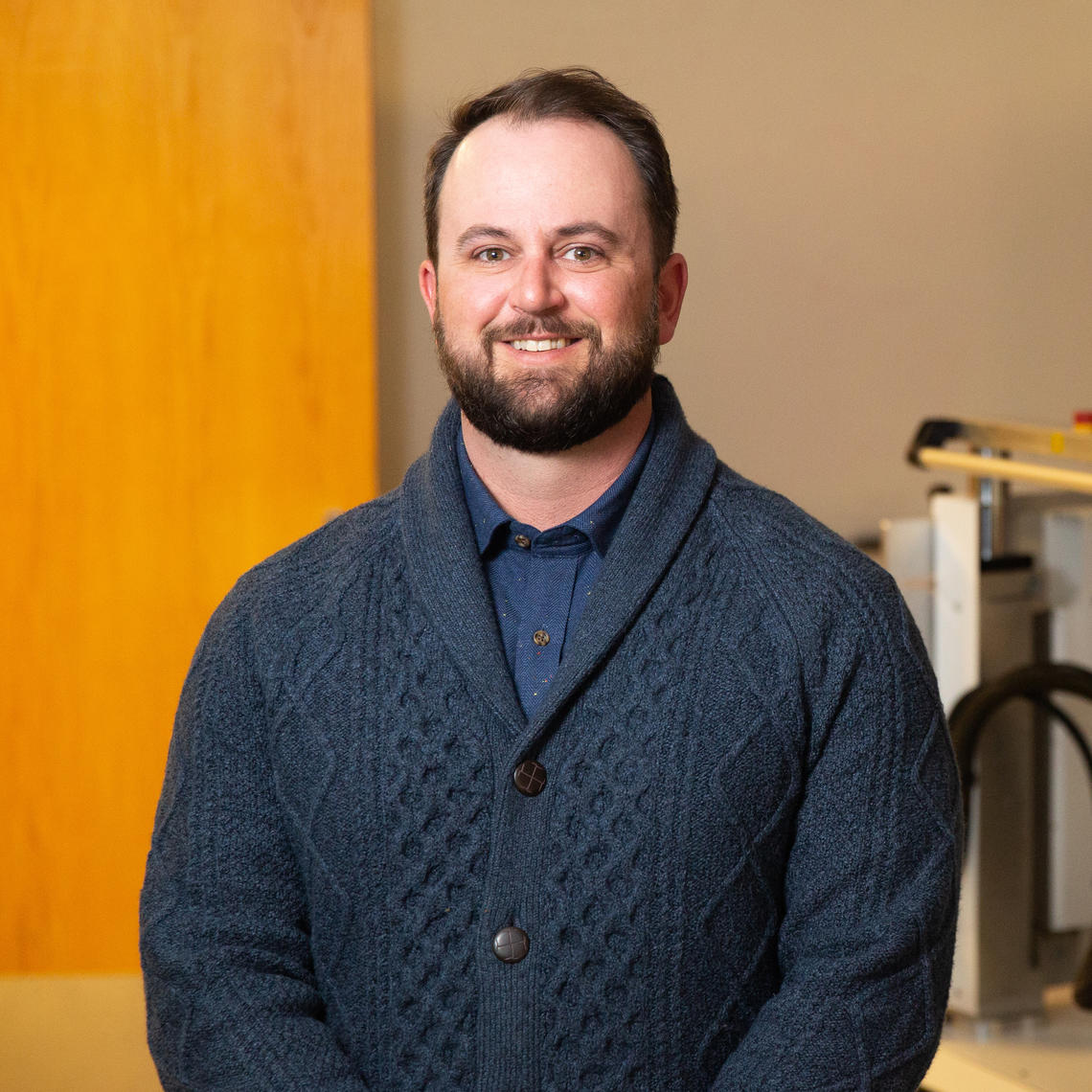June 8, 2022
Exoskeleton robot helps researchers shed new light on learning and stroke recovery

This morning, you probably reached out of bed to turn off your alarm clock, and later brushed your teeth or buttoned a shirt. Those movements are routine; mundane, even. You are long past the point of wondering how you learned to do any of those things and don’t give a second thought to the complexity of what happened in your brain so that your arm could lift your cup of coffee.
That is, unless you or someone you know is one of the more than 60,000 Canadians who experience a stroke each year. For them, damage to their brain from a blood clot or bleeding can mean that motor skills are challenging, and understanding how to learn — or, rather, re-learn — them is suddenly very important.

Tyler Cluff is co-leading a clinical project to collect a large dataset of information on how people of all ages and sexes learn motor skills.
Riley Brandt
“When the nervous system functions well, things look elegant,” says Dr. Tyler Cluff, PhD, assistant professor in the Faculty of Kinesiology at the University of Calgary. “We don’t have to put a lot of conscious thought or effort into movement, how we learn new motor skills or adapt them for different contexts. When there’s an injury, illness or a disorder that impacts the health and function of the nervous system, even the simplest task like eating with a spoon can be challenging.”
For more than a decade, Cluff has been studying how people learn motor skills. He knows that reaching for that spoon relies on distributed circuits throughout the brain. Now, he is co-leading a clinical project at UCalgary with Dr. Sean Dukelow, MD, PhD, a physiatrist, member of the Hotchkiss Brain Institute, and medical director of stroke rehabilitation for the Calgary Stroke Program.
The goal is to collect a large dataset that can inform on how healthy people of all ages and sexes learn motor skills. This dataset will provide a basis to understand how stroke influences motor learning during the time that many people are participating in rehabilitation.
The research is done using a robot device called the Kinarm. Patients sit in the robotic exoskeleton and, using their arms, interact with a two-dimensional virtual-reality environment as data is collected. The Kinarm was developed to assess sensory, motor and cognitive function by Dr. Stephen Scott, PhD, at Queen’s University. It was designed so that new tasks and analyses can be developed and applied to evolve the Kinarm’s assessment capabilities.
Both Cluff and Dukelow worked with Scott in Ontario before coming to UCalgary, where they use the Kinarm in their research through the Human Performance Lab and Neuro Robot Lab. Cluff designed the specific assessment tool being used for this clinical trial.

Patients sit in the Kinarm exoskeleton. As they use their arms to interact with a virtual reality environment data is being collected to develop a profile of how their brain learns motor skills and where there are impairments.
Riley Brandt
The UCalgary study aims to recruit 150 healthy people, as well as 150 individuals recovering from stroke. Study participants watch a screen in front of them and complete tasks such as hitting balls as they go by, crossing out lines or reaching to targets. The Kinarm challenges them by introducing errors. The nervous system typically responds by trying to correct the errors.
All the while, the exoskeleton is measuring how quickly and how well the person responds to those challenges. After a series of activities, the researchers can begin to create a profile of how the brain learns those skills and where there are impairments.
The 150 healthy controls in the study provide the foundation. “Once we understand the range of what healthy behaviour looks like, we can flag impairment. We can identify the problem, and, in the long term, we hope to develop new strategies that help people recover,” says Cluff.
For stroke patients, their brain profile includes accounting for lesions on their brain where it was damaged when normal blood flow was interrupted. “What we’re depending on (for rehabilitation) is rewiring around that dead tissue in the brain,” says Dukelow. “A lot of literature has been around repetition in helping that rewiring process, but no one really knows how much is required and it’s probably different for every patient.”
This clinical trial is in its first phase of collecting a large dataset to map the brain as it relates to learning motor skills. It’s the beginning of a long-term project that will equip doctors with the knowledge and data they need to zero in on personalized strategies to help patients maximize rehabilitation after stroke.
For more information on how you can participate in the clinical trial, please contact relearn@ucalgary.ca.
Sean Dukelow is an associate professor in the Department of Clinical Neurosciences and a member of the Hotchkiss Brain Institute, the Libin Cardiovascular Institute and the McCaig Institute for Bone and Joint Health at the Cumming School of Medicine (CSM). He is also a lead of the RESTORE Network.
Tyler Cluff is a member of the Hotchkiss Brain Institute at the CSM.







